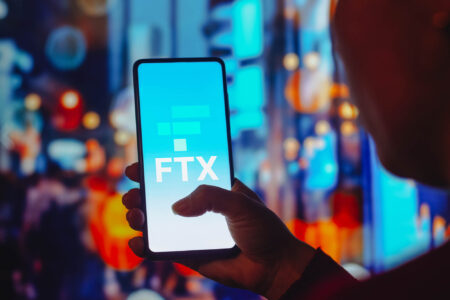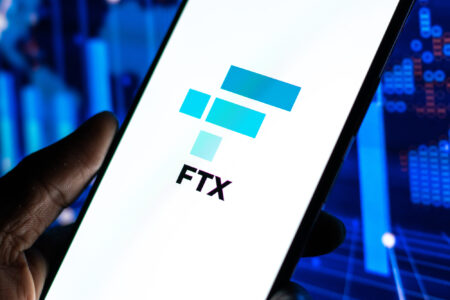A challenging year is coming to an end as the blockchain industry had to endure various multi-billion dollar company collapses and fraud scandals. The most important developments of the past year in a compact review of the year 2022.
The final push of the bull cycle
The consequences of the Covid crisis in 2020 and their impact on global monetary policy energized cryptocurrencies in their already cyclical uptrend. The largest and oldest cryptocurrency Bitcoin multiplied by twenty within two years, while new trends took the spotlight towards the end of the bull market. The shift in direction of the Federal Reserve Bank coincided with the “Sell the News” event for the crypto markets of the first US Bitcoin ETF in November 2021, marking an all-time high for digital gold and thus the beginning of the end for most other digital assets.
However, the music had not yet completely stopped. The increased demand for digital assets met an unlimited supply side. Every day new tokens worth dozens of millions were issued, new NFTs were created, and venture capital allocations were unlocked. DeFi protocols paid out their own token yields in the triple-digit range to capture vital liquidity. Added to this were the usual block rewards of the miners, which alone amounted to around $60 million per day with Bitcoin. The absurdity of the projects and the sheer infinity of new digital tokens looking for buyers every day indicated an overextension phase.
This was followed in the first half of 2022 by what had to come eventually: the market could no longer absorb the daily supply of digital assets. The reversed trend was accentuated in the new environment marked by Quantitative Tightening (QT) and a general “Riskoff” attitude and was particularly pronounced in the overheated crypto market.
Terra/Luna: a $60 billion construct collapses
Stablecoins, usually in the form of dollar-pegged tokens, have established themselves over the past few years as essential pillars in the world of decentralized finance (DeFi). They are included in the most volume-heavy crypto pairs and are considered a safe haven compared to volatile cryptocurrencies due to their peg to a fiat currency. Stablecoins are generally managed by centrally run companies that back newly created tokens with dollar deposits and liquid financial instruments.
Algorithmic Stablecoins take a different approach. An algorithm/protocol acts as the central bank in this case and is responsible for maintaining the peg. Unlike fully collateralized or over-collateralized stablecoins, the peg is maintained through the protocol’s own tokens, whose price is independent of supply and demand. In theory, the mechanism should be able to mitigate any inflationary or deflationary tendencies of the relevant stablecoin through minting and burning of its own protocol tokens.
In practice, various “algo-stables” have gone through a reality check. Market leader Terra/Luna—an ecosystem with a former total value of around $60 billion—was crushed in May under its own ponzi-like model. The protocol’s own stablecoin TerraUSD (UST) lost its dollar peg one day and the ensuing LUNA inflation “ad infinitum” led to a rapid downward spiral. The ecosystem was wiped out from one week to the next, while investors suffered a painful total loss. The first domino had fallen.
The stone gets rolling
The first bubble had burst. Central service providers and VC investors with significant exposure to the Terra/Luna ecosystem were the next victims in the sights of the raging bear. The most important one: Three Arrows Capital. Known in the bull market as one of the most successful crypto trading houses, “3AC” was founded in 2012 by two former investment bankers focused on proprietary trading in growth markets. Accompanied by a variety of profitable investments in the crypto sector and the re-pledging of their illiquid securities, managed assets grew to over 10 billion US dollars.
The streak of success came to an abrupt end with the end of the crypto boom and the collapse of the Terra stablecoins supported by Three Arrows with billions of US dollars. Lack of diversification coupled with a wildly leveraged balance sheet resulted in a highly toxic mixture. 3AC was unable to meet its obligations and had to file for bankruptcy. The two founders fled to Dubai and Bali.
The hedge fund’s implosion led to a serious liquidity crisis in the industry, which forced numerous providers and projects into their knees in a domino effect. Collateral damage such as the bankruptcy of US broker Voyager Digital, the crypto lending platforms Celsius & BlockFi, and various others demonstrated the problem. This revealed questionable business practices of the participating providers, whose origins do not differ from previous banking crises.
A technological milestone amidst the tumult
Despite the market turbulence, a technological leap for the Ethereum blockchain was slowly approaching. With the “Merge”, the largest smart contract network performed one of the most complex upgrades ever. The switch of the consensus algorithm from Proof of Work to Proof of Stake had to be done while the network was running 24/7, which posed a risk to the underlying digital assets worth over $200 billion in the system.
Nevertheless, the many years of preparation were worth it, and the switch to Proof of Stake went off without a hitch. For the end-users of the blockchain, not much changes, but the transition has significant implications for the network itself and its native cryptocurrency Ether (ETH).
Crypto regulation gains global traction
Technologies with the potential to completely reshape entire business sectors are naturally developing rapidly. This was already visible in the early days of the internet and is no different with the emergence of blockchain technology. The motto “move fast and break things” ultimately also leads to avoidable disasters such as the Terra/Luna debacle. Understandably, regulators lag behind these developments. However, for mass adoption of new use cases, regulation is essential, as without legal certainty, the flow of investment and thus innovation stagnates.
What was initiated in March by an executive order of the US President is now in an advanced stage. A full regulatory framework for digital assets – in particular dollar-based stablecoins – is soon to create the legal basis for the area. Various commissions of the US regulatory apparatus receive different areas of responsibility, while the Securities and Exchange Commission (SEC) plays a central role.
Pressed by the rapid developments in the US, the EU had to take a stand. With the law proposal “Markets in Crypto-Assets” (MiCA), which has been worked out for more than two years, the union created the first pillar. The new legal framework covers the areas of transparency, disclosure, authorization and monitoring of transactions by service providers. It primarily aims to create a uniform approach in all 27 member states. After its adoption by the European Council this year, nothing stands in the way of implementation. MiCA is to come into force as early as 2024.
Credit crisis ends in crypto’s “Lehman Moment”
2022 was marked by a series of high-profile bankruptcies of various multi-billion dollar crypto firms. The same pattern is present that has been seen in many historical financial crises. The wave of bankruptcies that the industry is currently going through is the consequence of an industry that blindly neglected risk aspects during an unprecedented bull market and thus brought itself to its knees. The parallels to traditional financial crises are unmistakable. What in 2008 came disguised as a pile of junk mortgages in AAA clothing can now be replaced in the digital age by self-created “utility” or “governance” tokens.
To round off an already turbulent year, the collapse of the formerly second largest crypto exchange FTX caused a spectacular climax. The incident is undoubtedly the biggest scandal that the sector has ever experienced. In addition to damaged customers, counter parties and investors, it leaves a very bitter aftertaste regarding the circumstances that led to the collapse. The bankruptcy is marked by ignorance, massive debt, and ultimately fraud on a billion-dollar scale. Misappropriation of customer funds, accounting manipulation, and a lack of separation of powers are rounded off by an unequal withdrawal of deposits and a “hack” of several hundred million. Generous political donations from the now arrested FTX founder Sam Bankman-Fried and his connections to the US regulator SEC’s leadership are also raising the eyebrows of skeptics.
The aftermath of the disaster will be felt for a long time to come, while the entire industry struggles to restore the trust that has been lost. In addition to the required expansion of transparency of central crypto service providers, the debacle will drive the main application of cryptocurrencies: the unrestricted self-custody of digital assets.
Sustainable growth as an effect
The bankruptcy of centralised crypto-service providers, whose actions were based on negligent business practices and fraudulent behaviour, led not only to a substantial financial loss but also to a loss of trust. The industry must go back to the origin of blockchain technology and replace trust in counterparties with mathematical proof. Overall, the current market cleansing with the elimination of non-competitive market players leads to a more robust infrastructure. This painful cleansing process is accelerated by the absence of a central bank that keeps zombie companies artificially alive with artificial money creation. The free market thus creates the most efficient basis for robust and sustainable business practices.
The root of the problem that the industry has manoeuvred itself into has, ultimately, little to do with Bitcoin or blockchain. Its integrity has remained untouched since its existence. The decentralised Bitcoin blockchain network manages a record number of active wallets and has handled unrestricted transactions worth $105 billion since its inception. And even the second-largest smart contract-enabled blockchain network Ethereum is thriving along with the successful milestone of 2022. Companies are discovering the properties of blockchain and establishing themselves in the field, be it through NFTs, tokenised assets, digital identities, gaming, etc. The future of the industry is diverse and unstoppable. Of course, there will be difficult challenges in 2023 as well. The technological disruption will take place in many areas, it is unstoppable due to the global and decentralised nature of the technology.






















